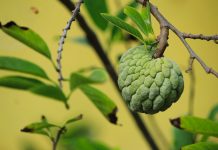What is innovative sustainable forest management?
Innovative sustainable forest management is crucial for maintaining the ecological, economic, and social benefits that forests provide. As the world population continues to grow and the demand for forest products increases, it is important to find innovative ways to manage forests in a sustainable manner to get Sustainable Forest Management.
Why Is Innovative Sustainable Forest Management Important?
Innovative sustainable forest management is important because it helps to ensure that forests can continue to provide a wide range of environmental, economic, and social benefits for current and future generations. Proper forest management can help to conserve biodiversity, protect soil and water resources, regulate climate, and provide recreational opportunities.
Additionally, sustainable forest management can also help to support local communities by providing jobs and income from the sustainable harvest of forest products. By using innovative techniques such as precision forestry, forest certification, and remote sensing the forest management process can be more efficient and sustainable.
What is the approach to it?
Use Of Precision Forestry Techniques
One innovative approach to sustainable forest management is the use of precision forestry techniques. These techniques use technology such as GPS, drones, and remote sensing to gather data on the forest and make more precise and efficient management decisions. For example, precision forestry can be used to map the location and health of individual trees, which allows for more targeted logging and replanting efforts.
Use Of Agroforestry Systems
Another innovative approach is the use of agroforestry systems. Agroforestry combines the cultivation of crops and animals with the management of trees. This can provide a number of benefits, such as increased biodiversity, improved soil health, and increased crop yields. For example, by planting crops such as coffee or cocoa underneath a canopy of trees, farmers can create a more sustainable and resilient system that provides multiple sources of income.
Use Of Certification Schemes
Another example of innovative sustainable forest management is the use of certification schemes such as the Forest Stewardship Council (FSC) and the Programme for the Endorsement of Forest Certification (PEFC) which are recognized worldwide. These certification schemes set standards for responsible forest management, such as protecting biodiversity, ensuring the rights of local communities, and reducing the impact of logging on the forest ecosystem.
In addition, sustainable forest management also includes:
-
protection of endangered species
-
reduction of carbon footprint
-
promotion of biodiversity
-
protecting the rights of indigenous communities
-
conserving cultural heritage
In conclusion – In today’s world climate change and global warming are two of the most crucial and important problems that need immediate response and action. Innovative sustainable forest management is one such step that is the hope not only for humanity but for the whole planet earth.
Innovative sustainable forest management is crucial for ensuring that forests can continue to provide a wide range of benefits for generations to come. By using precision forestry techniques, agroforestry systems, certification schemes, and other innovative approaches, we can create a more sustainable and resilient future for our forests and hence for future generations.







